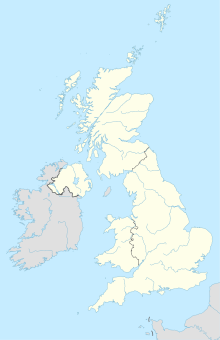| Battle of Bamber Bridge | |||
|---|---|---|---|
| Part of the Western Front of World War II | |||
 Ye Olde Hob Inn, where the violence started | |||
| Date | 24–25 June 1943 | ||
| Location | Bamber Bridge, Lancashire, England, United Kingdom 53°43′18″N 2°39′44″W / 53.7217°N 2.6621°W | ||
| Caused by | Racial tensions | ||
| Parties | |||
| Casualties | |||
| Death(s) | 1 | ||
| Injuries | 7 | ||
| Charged | 32, charged with mutiny | ||
The Battle of Bamber Bridge is the name given to an outbreak of racial violence involving American soldiers stationed in the village of Bamber Bridge, Lancashire, in northern England, during the Second World War.
Tensions had been high following a failed attempt by US commanders to racially segregate pubs in the village, and worsened after the 1943 Detroit race riot. The battle started when white American military police (MPs) attempted to arrest several African American soldiers from the racially segregated 1511th Quartermaster Truck Regiment for being out of uniform, a violation of the US Army Code of Conduct, in the Ye Olde Hob Inn public house in Bamber Bridge.
In a confrontation on the street afterwards, a white MP shot and killed Private William Crossland after Private Crossland drunkenly attacked the MP. More military police then arrived armed with machine guns and grenades, and black soldiers armed themselves with rifles from their base armoury. Both sides exchanged fire through the night. In the end, a court martial convicted 32 African American soldiers of mutiny and related crimes.

